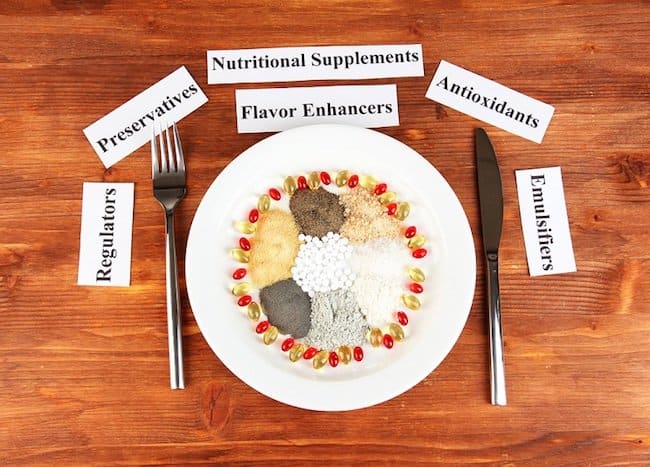


|
Antimicrobial agents |
Antioxidants |
Chelating agent |
|---|---|---|
|
(Table by PreMediaGlobal. © 2013 Cengage Learning.) |
||
|
Benzoates. Inhibits the growth of molds, yeasts, and bacteria in acidic drinks and liquids, including fruit juice, vinegar, sparkling drinks, and soft drinks. Sodium benzoate. Used as an antimicrobial agent in foods with a pH below 3.6, including salad dressings, carbonated drinks, fruit juices, and Oriental food sauces such as soy sauce and duck sauce. Sorbates. Prevents the growth of molds, yeasts, and fungi in foods or beverages. Propionates. Inhibits the growth of mold in baked goods. Nitrites. Prevents the growth of bacteria, particularly Clostridium botulinum (bacterium responsible for botulism), in meat or smoked fish. |
Sulfites. Prevents oxidation and inhibits the growth of yeasts and fungi in beer and wines, and preserves meats, dried potato products, and dried fruits. Vitamin E. Slows oxidation of fresh-cut fruits and vegetables, used to fortify breakfast cereals and pet foods. Vitamin C. Prevents browning of fresh-cut apples, peaches, and other fruits. Butylated hydroxyanisole (BHA). Prevents oxidation in butter, lard, meats, baked goods, beer, vegetable oils, potato chips and other snack foods, nuts and nut products, and dry mixes for beverages and desserts. Butylated hydroxytoluene (BHT). Used in fats, oils, shortening, and similar products. |
Disodium ethylenediaminetetraacetic acid (EDTA). Delays spoilage (used in food processing). Polyphosphates. Used as an anti-browning agent in dips and washes for fresh-peeled fruits and vegetables. Citric acid. Used as a flavoring agent and antioxidant in foods. |










